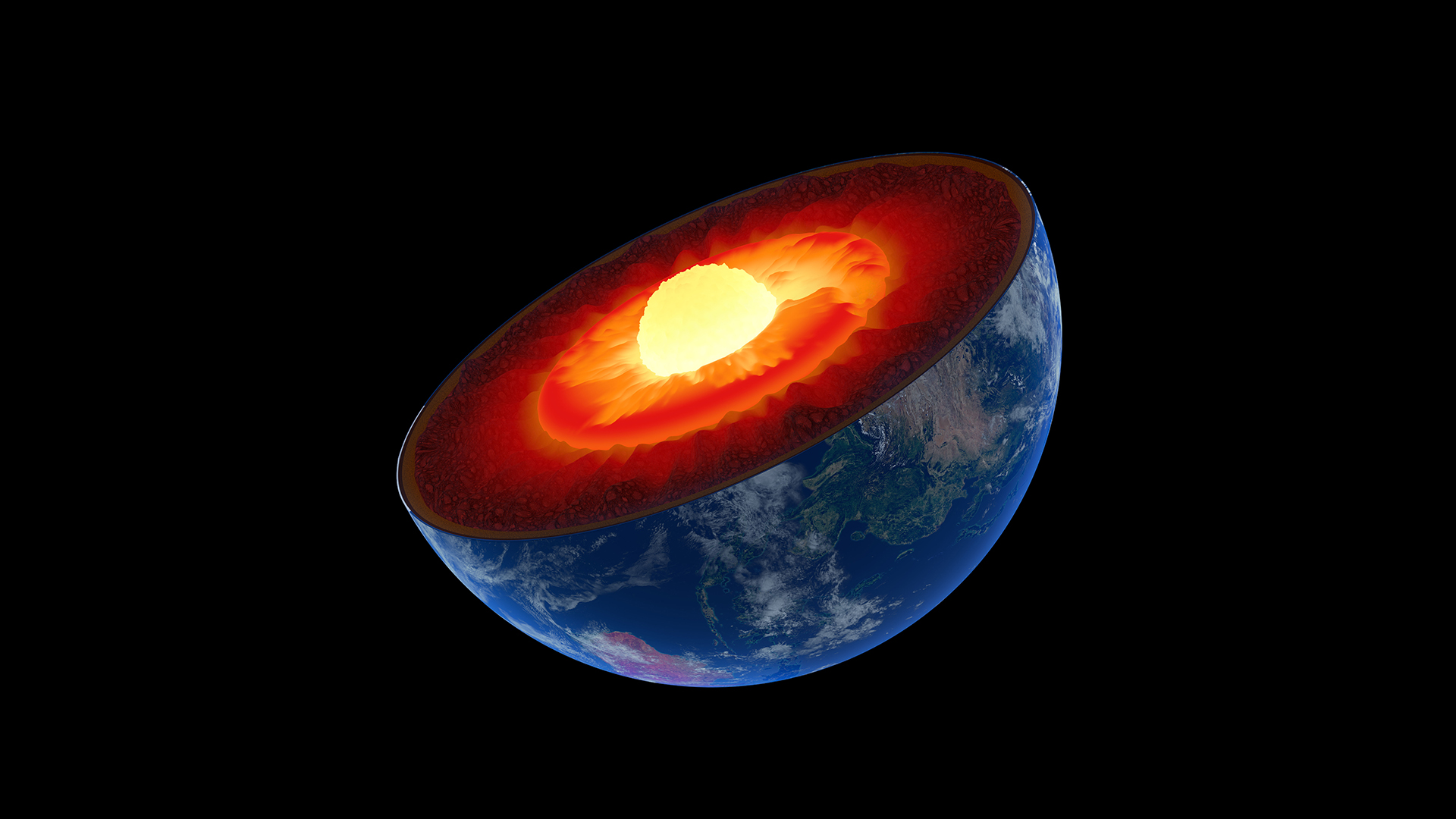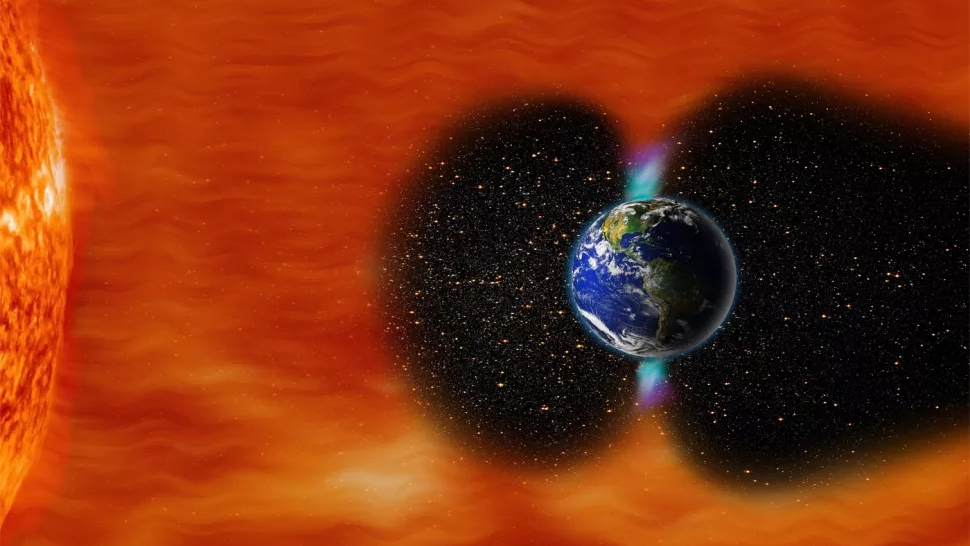11 amazing Earth discoveries from 2022
Earth has been thoroughly explored, yet is still teeming with secrets. In 2022, scientists unearthed several of them.

Explorers have scaled the planet's highest peak and trawled its deepest ocean trench, yet Earth is still teeming with secrets waiting to be discovered.
Every year, scientists chip away at the mystery hidden in the third rock from the sun, and this year was no exception. From a hidden network of under-ice rivers in Antarctica to disturbing new findings about the San Andreas Fault, here are some of the most surprising secrets we learned about our home planet in 2022.
1. An under-ice Antarctic river 300 miles long
This year, scientists discovered a river coursing beneath the Antarctic ice sheet that was as long as the River Thames in England. Scientists found the subterranean thoroughfare, which drains a region as big as Germany and France combined, by using ground-penetrating radar.
The discovery of this hidden meltwater drainage system could be the "missing link" that explains where and how Antarctica's ice is melting, scientists said.
2. Dino-killing asteroid caused months-long quakes
The asteroid that wiped out the non-avian dinosaurs 66 million years ago triggered months long quakes that rocked the planet, new research revealed. Evidence of the mega-quake was revealed in rocks around the Chicxulub impact crater in Mexico.
Yet some of the twisted and rumpled layers of rock from this catastrophic crash contained traces of pollen — evidence that life began to rebound as little as six months after the impact.
3. Massive solar storm 10 times bigger than the Carrington Event revealed
A massive solar storm bigger than the Carrington Event, has been discovered in bits of ancient rocks. Traces of radioactive versions of beryllium, chlorine and carbon in rocks from Greenland reveal that a massive proton storm slammed into Earth's magnetosphere in 660 B.C., or 2,600 years ago. Further evidence suggests large proton storms may have struck three times in the last few millennia.
Get the world’s most fascinating discoveries delivered straight to your inbox.
The previously unknown storm occurred before electricity, satellites and telecommunications, but if a similarly strong storm were to hit now, the damage could be enormous, researchers say.
4. Mantle blobs fuel a diamond factory near Earth's core
Two giant blobs of rock under Africa and the Pacific may be driving the production of diamonds at the boundary between Earth's core and its mantle — its middle layer — researchers found.
Where the core meets the mantle, liquid iron meets solid rock at extreme temperatures and pressures. Past research suggested these extreme conditions, combined with water locked in mantle rocks, can fuel chemical synthesis, such as diamond formation.
To test this idea, the researchers put together the chemicals typically found at the core-mantle boundary and subjected them to crushing pressures under a diamond anvil. They produced tiny diamonds, suggesting that the blobs in the mantle, also called ultra-low velocity zones, may be places where water drives melt and thereby fuels diamond formation.
5. A 4 billion-year-old chunk of Earth's crust found
Scientists found a 4-billion-year-old hunk of Earth's crust hiding out in Western Australia. The hidden rock was found not far from where Earth's oldest minerals were found in Australia's Jack Hills.
The ancient rock spans a region about 38,610 square miles (100,000 square kilometers) in area. Crust of about the same age can be found around the world, suggesting that some transition occurred on Earth around that time, the researchers said.
6. Most powerful lightning bolt ever detected
A gigantic jet that shot into space may have been the most powerful lightning bolt ever detected, researchers said. The jet first pinged detectors above a cloud in Oklahoma in 2018. Now, scientists have finally analyzed the jet's radio wave emissions using radar and satellite data. The jet jolted a huge amount of energy into the ionosphere, the layer of charged particles that separates Earth's upper atmosphere from empty space. The bolt produced 60 times as much energy as a typical lightning bolt, the study found.
7. City of towering hydrothermal vents discovered deep beneath the ocean
Scientists piloting a remotely operated vehicle a few hundred miles off Mexico discovered a massive region of towering hydrothermal vents on the seafloor 1.5 miles (2.5 kilometers) beneath the surface of the Pacific Ocean.
The massive vents, which are up to 40 feet (12 meters) tall and look like candelabras, gush out mineral-rich water that likely starts at a scorching 818 degrees Fahrenheit (437 degrees Celsius).
The newfound vents are part of the East Pacific Rise, a series of underwater volcanoes that span from the Gulf of Mexico to Antarctica.
8. Ancient source of oxygen for early life unearthed
Scientists have discovered an ancient source of oxygen that could have fueled the rise of early life on Earth. Powerful earthquakes struck the planet roughly 3.8 billion years ago, cracking it like an egg. The combination of near-boiling water and seismic activity could have generated the oxygen needed for some of Earth's earliest lifeforms.
The oxygen would have come packaged as hydrogen peroxide, which is toxic to life but could nevertheless have been harnessed by ancestral lifeforms similar to extremophiles and archaea. These ancient life forms would have thrived in the blistering temperatures of early oceans, and could have figured out ways to detoxify the hydrogen peroxide to harness its oxygen, researchers suggested. This source of oxygen would have predated photosynthesis, the current dominant source of the planet's oxygen, by up to a few hundred million years.
9. Mountain-size rock under Japan channels quakes
A mountain-size rock hiding under Japan may be channeling earthquakes in the region. The igneous rock, dubbed the Kumano Pluton, is a few miles beneath the crust of the Eurasian continental plate under the Kii peninsula. In this region, the Philippine plate is diving beneath the Eurasian plate, and the pluton may be changing the angle of that dive.
Two major earthquakes struck in the 1940s, but did not join up, and the pluton may be a big reason, researchers discovered.
10. Oldest evidence of plate tectonics unearthed
Scientists have unearthed the oldest evidence of plate tectonics, in miniscule crystals from South Africa. Each crystal is no bigger than a grain of sand, and they show that the Earth's crust broke up and began to move around 3.8 billion years ago.
These crust movements may not have been full-fledged plate tectonics, the modern process by which Earth's crust is continually recycled into its interior. But a primitive crust conveyor belt was likely already churning then. This plate motion occurred relatively soon after the crust formed, around 4.1 billion years ago, researchers said.
11. Middle of the San Andreas fault could unleash large earthquakes
The creeping "middle" section of the San Andreas fault could unleash earthquakes of bigger magnitude than previously thought. Past work suggested the San Andreas fault in this region, between Parkfield and Hollister, could generate no bigger than magnitude-6.0 quakes. But quakes generating more than 10 times the energy — greater than magnitude 7.0 — have struck this fault region in the last few million years, the study authors found.

Tia is the editor-in-chief (premium) and was formerly managing editor and senior writer for Live Science. Her work has appeared in Scientific American, Wired.com, Science News and other outlets. She holds a master's degree in bioengineering from the University of Washington, a graduate certificate in science writing from UC Santa Cruz and a bachelor's degree in mechanical engineering from the University of Texas at Austin. Tia was part of a team at the Milwaukee Journal Sentinel that published the Empty Cradles series on preterm births, which won multiple awards, including the 2012 Casey Medal for Meritorious Journalism.












